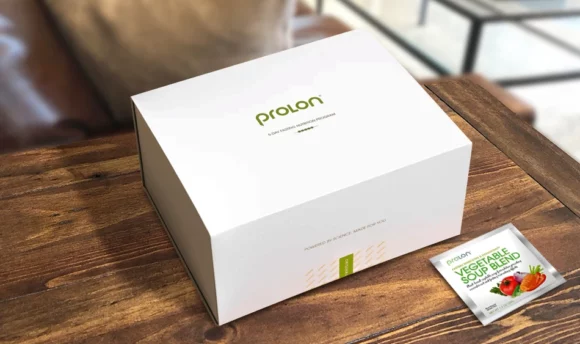Dirty Fasting: What You Need to Know
If a regular fasting is too restrictive for you, try dirty fasting. What is it, how does it work, and is it effective? Read on to find out.

Dirty fasting is a novel approach to intermittent fasting (IF) that is taking the fitness community by storm. Unlike traditional intermittent fasting, which can be pretty restrictive, dirty fasting allows you to eat in small amounts throughout the fasting period.
The idea behind dirty fasting is that the body’s insulin sensitivity is heightened, which makes it more convenient and palatable without completely abstaining from food for a long period of time. This makes it ideal for anyone looking to lose a little bit of weight or maintain a healthy body composition through their diet.
Here’s everything you need to know in order to practice dirty fasting, including how it differs from traditional intermittent fasting, as well as what it can do for your weight loss goals and health in general.
What Is Dirty Fasting?
Dirty fasting is a form of intermittent fasting (IF) that allows you to have some calories during your fasting window. With only some tens of calories, it’s highly unlikely that you’ll put a dent in your fast; so technically, you aren’t breaking the fast.
Unlike clean or traditional fasting, which keeps calorie intake at zero, dirty fasting is all about fitting in a small amount of nutrition – typically around 100 calories – during your fasting window, so you don’t fall off the fasting wagon. If you’re new to intermittent fasting, dirty fasting may be a good starting point because it allows some safe wiggle room for newbies.
Dirty fasting allows you to take delight in low-calorie foods that you can consume or add to your beverages. From a cup of bone broth (40 calories, 3g carbs) to black coffee with one tablespoon of cream in it (30 calories, 0.5g carbs), you have a wide range of options to devour during your fasting window. The overall goal here is losing weight while taking a break from calorie-rich food and still consuming small amounts of calories during your fast.
What’s more, studies have shown that eating a small amount of food during a fast can even help lower blood glucose and insulin levels. This may be beneficial for weight loss in people with diabetes or metabolic syndrome and could potentially reduce the risk for Alzheimer’s disease.
Does Dirty Fasting Work?
The short answer is yes – and it’s just as effective as clean fasting. Dirty fasting can support weight loss while also improving your overall health. Why, you may ask? This is simply because you’re likely to consume far fewer calories when dirty fasting than you would during a typical day of eating without time restrictions.
In essence, dirty fasting mimics other forms of intermittent fasting by cleansing cells and promoting autophagy, where the body eats away at damaged cells. It allows you to sustain weight loss over time than if you were eating more amounts during conventional intermittent fasts.
Additionally, by allowing some calories on restricted days (typically 400–600 per day), you’re able to avoid feelings of hunger that would normally prevent you from sticking with intermittent fasting programs in general. As a result, dirty fasting can be a good option for individuals who want to adopt an intermittent fasting approach but still want to eat real food as part of their diet plan.
What does this mean in practice? Instead of having only one or two large meals each day, dirty fasters may have three or four meals that are much smaller in size.
For example, rather than having just one large meal at dinner time, they might have soup or salad at lunchtime followed by a handful of nuts, half an avocado, or some low-calorie snacks to keep them going until dinner. These foods supply minimal calorie intake but do contain micronutrients that are required for the normal functioning of the body.
Pro Tip: You can also drink coffee or tea with up to two tablespoons of MCT oil each day because these drinks don’t raise the insulin response. Also, research has shown that caffeine can serve as an appetite suppressant, so you can feel fuller for longer!
How Many Calories Break a Fast?
Strictly speaking, any amount of calories will break a fast. However, if you’re dirty fasting, then you have the leverage to consume 50–100 calories in the fasting window without breaking your fast.
The general rule of thumb is that fasting rules differ depending on your goal. Some people advocate eating between 100 and 200 calories during a fasting window, while others prefer less than 50.
What’s important is that you pay attention to how your body feels when you eat different amounts of food and then use those cues to help you determine what calorie intake level is right for you.
Dirty Fast vs. Clean Fast
Both dirty fasting and clean fasting are proven methods to improve insulin sensitivity, lower blood sugar levels, increase cellular detoxification, and, most importantly, burn body fat. But that’s where their similarities end.
Clean vs. dirty fasting refers to how you incorporate food into your intermittent fasting regimen. In its strictest sense, clean means that you aren’t consuming anything except for water or tea (without sugar) when you’re fasting. This kind of fast allows you to consume nothing that will spike your insulin levels.
Dirty fasting, on the other hand, allows up to 100 calories a day to ensure that you don’t feel overly hungry while trying to lose weight. Dirty fasting can also help curb junk food cravings during an extended period of time, and it is a lot easier to follow than clean fasting.
What’s more, people who want to maximize their calorie restriction should opt for a clean fast. On the contrary, someone who’s looking to lose weight without restricting calories quite so severely might try dirty fasting.
In addition, clean fasting increases your risk of dehydration or becoming hangry (hungry and angry). On the other hand, the proponents of dirty fasting say it also helps eliminate cravings, something most people experience when they’re on a clean fast.
Trying either clean or dirty fasting can create significant changes in your body. This is why it’s always best to discuss intermittent fasting with your doctor if you are under 18 years old or if you have any existing health conditions. In some cases, blood levels must be closely monitored during periods of extended fasting.
A Word From Our Nutritionist
Dirty fasting is helpful for those who want to maximize their fat loss results and are looking for quick, substantial results. This makes it a very practical approach for people with busy work schedules or those who can’t go 12 hours between meals!
A dirty fast will allow you to feed your hunger and calorie intake cravings without compromising your long-term weight loss goals. This form of fasting also makes sense from a psychological standpoint as well; it helps many people stick to their routine by meeting one or two small exceptions within each day instead of eliminating everything all at once.
Make sure you’re eating adequate amounts of protein and fiber as they help regulate your hunger hormones. This means you’ll be more in control of your cravings! Plus, you need protein for muscle repair and building. Overall, these two macronutrients should provide a solid foundation for all meals.
One way to do it is by eating foods like wild salmon and other fatty fish; other good sources include chicken breast, low-fat yogurt, or beans. For protein smoothies, whip one up with Greek yogurt or cottage cheese (add fruit if it’s too thick), low-fat milk, or whey powder.
Conclusion
If you are just starting out, dirty fasting might be a lot easier for you to practice than clean fasting. The goal is not to consume any calories whatsoever but to still provide your body with fuel.
Before choosing a dirty-fasting plan, check with your doctor or nutritionist first to make sure it’s right for you. The bottom line? If you try it out and stick with it long-term, it is a great way to cleanse your body and lose weight.

















































 Select your language:
Select your language: 








